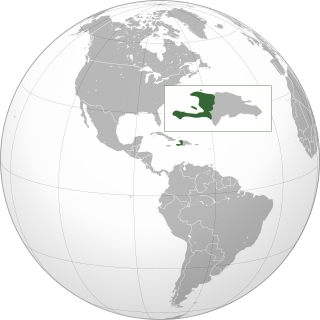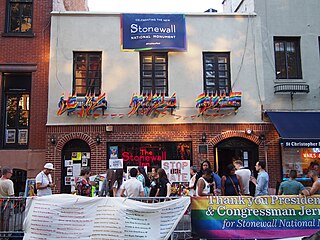Related Research Articles
Within Christianity, there are a variety of views on sexual orientation and homosexuality. The view that various Bible passages speak of homosexuality as immoral or sinful emerged through its interpretation and has since become entrenched in many Christian denominations through church doctrine and the wording of various translations of the Bible.
Within the Muslim world, sentiment towards LGBTQ people varies and has varied between societies and individual Muslims. While colloquial and in many cases de facto official acceptance of at least some homosexual behavior was commonplace in pre-modern periods, later developments, starting from the 19th century, have created a generally hostile environment for LGBTQ people. Most Muslim-majority countries have opposed moves to advance LGBTQ rights and recognition at the United Nations (UN), including within the UN General Assembly and the UN Human Rights Council.
The relationship between religion and homosexuality has varied greatly across time and place, within and between different religions and denominations, with regard to different forms of homosexuality and bisexuality. The present-day doctrines of the world's major religions and their denominations differ in their attitudes toward these sexual orientations. Adherence to anti-gay religious beliefs and communities is correlated with the prevalence of emotional distress and suicidality in sexual minority individuals, and is a primary motivation for seeking conversion therapy.

Societal attitudes toward homosexuality vary greatly across different cultures and historical periods, as do attitudes toward sexual desire, activity and relationships in general. All cultures have their own values regarding appropriate and inappropriate sexuality; some sanction same-sex love and sexuality, while others may disapprove of such activities in part. As with heterosexual behaviour, different sets of prescriptions and proscriptions may be given to individuals according to their gender, age, social status or social class.

Lesbian, gay, bisexual, transgender, and queer (LGBTQ) rights in Croatia have expanded since the turn of the 21st century, especially in the 2010s and 2020s. However, LGBTQ people still face some legal challenges not experienced by non-LGBTQ residents. The status of same-sex relationships was first formally recognized in 2003 under a law dealing with unregistered cohabitations. As a result of a 2013 referendum, the Constitution of Croatia defines marriage solely as a union between a woman and man, effectively prohibiting same-sex marriage. Since the introduction of the Life Partnership Act in 2014, same-sex couples have effectively enjoyed rights equal to heterosexual married couples in almost all of its aspects, except adoption. In 2022, a final court judgement allowed same-sex adoption under the same conditions as for mixed-sex couples. Same-sex couples in Croatia can also apply for foster care since 2020. Croatian law forbids all discrimination on the grounds of sexual orientation, gender identity, and gender expression in all civil and state matters; any such identity is considered a private matter, and such information gathering for any purpose is forbidden as well.

Lesbian, gay, bisexual, and transgender (LGBT) people in Serbia face significant challenges not experienced by non-LGBT residents. Both male and female same-sex sexual activity are legal in Serbia, and discrimination on the basis of sexual orientation is banned in areas such as employment, education, media, and the provision of goods and services, amongst others. Nevertheless, households headed by same-sex couples are not eligible for the same legal protections available to opposite-sex couples.

Lesbian, gay, bisexual, and transgender (LGBT) people in Bosnia and Herzegovina may face legal challenges not experienced by non-LGBT residents. Both male and female forms of same-sex sexual activity are legal in Bosnia and Herzegovina. However, households headed by same-sex couples are not eligible for the same legal protections available to opposite-sex couples.
Homosexuality in India is socially permitted by most of the traditional native philosophies of the nation, and legal rights continue to be advanced in mainstream politics and regional politics. Homosexual cohabitation is also legally permitted and comes with some legal protections and rights.

Obraz is a far-right political organization in Serbia. The Constitutional Court of Serbia banned Obraz in 2012, although it shortly after re-registered under a similar name.

Lesbian, gay, bisexual, transgender, and queer (LGBTQ) rights in Cuba have significantly varied throughout modern history. Cuba is now considered generally progressive, with vast improvements in the 21st century for such rights. Following the 2022 Cuban Family Code referendum, there is legal recognition of the right to marriage, unions between people of the same sex, same-sex adoption and non-commercial surrogacy as part of one of the most progressive Family Codes in Latin America, as well as amongst communist countries. Until the 1990s, the LGBT community was marginalized on the basis of heteronormativity, traditional gender roles, politics and strict criteria for moralism. It was not until the 21st century that the attitudes and acceptance towards LGBT people changed to be more tolerant.

Lesbian, gay, bisexual, and transgender (LGBT) rights in Cyprus have evolved in recent years, but LGBTQ people still face legal challenges not experienced by non-LGBT residents. Both male and female expressions of same-sex sexual activity were decriminalised in 1998, and civil unions which grant several of the rights and benefits of marriage have been legal since December 2015. Conversion therapy was banned in Cyprus in May 2023. However, adoption rights in Cyprus are reserved for heterosexual couples only.

Homophobia encompasses a range of negative attitudes and feelings toward homosexuality or people who identify or are perceived as being lesbian, gay or bisexual. It has been defined as contempt, prejudice, aversion, hatred, or antipathy, may be based on irrational fear and may sometimes be attributed to religious beliefs. Homophobia is observable in critical and hostile behavior such as discrimination and violence on the basis of sexual orientations that are non-heterosexual.

Lesbian, gay, bisexual, and transgender (LGBT) people in Albania face legal challenges not experienced by non-LGBT residents, although LGBT people are protected under comprehensive anti-discrimination legislation. Both male and female same-sex sexual activities have been legal in Albania since 1995, but households headed by same-sex couples are not eligible for the same legal protections available to opposite-sex couples, with same-sex unions not being recognized in the country in any form.

Lesbian, gay, bisexual, and transgender (LGBT) persons in Haiti face social and legal challenges not experienced by non-LGBT residents. Adult, noncommercial and consensual same-sex sexuality is not a criminal offense, but transgender people can be fined for violating a broadly written vagrancy law. Public opinion tends to be opposed to LGBT rights, which is why LGBT people are not protected from discrimination, are not included in hate crime laws, and households headed by same-sex couples do not have any of the legal rights given to married couples.

Lesbian, gay, bisexual, transgender, and queer (LGBTQ) rights in Kosovo have improved in recent years, most notably with the adoption of the new Constitution, banning discrimination based on sexual orientation. Kosovo remains one of the few Muslim-majority countries that hold regular pride parades.

This is a list of important events relating to the LGBT community from 1801 to 1900. The earliest published studies of lesbian activity were written in the early 19th century.
Communist attitudes towards LGBTQ rights have evolved radically in the 21st century. In the 19th and 20th century, communist parties and Marxist–Leninist states varied on LGBTQ rights; some Western and Eastern parties were among the first political parties to support LGBTQ rights, while others, especially the Soviet Union, some of its Eastern Bloc members, and the Communist East Asian nations harshly persecuted people of the LGBTQ community.

Homosexuality in Yugoslavia was first decriminalized in the Socialist Republics of Croatia, Slovenia, Montenegro and the Socialist Autonomous Province of Vojvodina in 1977. In other regions anti-LGBT legislation was, to varying degrees, progressively not implemented. The capital city of Belgrade, together with Zagreb and Ljubljana, became some of the first spots of an organized LGBT movement in the Balkans.

Lesbian, gay, bisexual, transgender, and queer (LGBTQ) people generally have limited or highly restrictive rights in most parts of the Middle East, and are open to hostility in others. Sex between men is illegal in 9 of the 18 countries that make up the region. It is punishable by death in four of these 18 countries. The rights and freedoms of LGBTQ citizens are strongly influenced by the prevailing cultural traditions and religious mores of people living in the region – particularly Islam.

The following outline offers an overview and guide to LGBTQ topics:
References
- ↑ Grubić-Radakovi, L. "Seksualna delinkvencija u suvremenom krivičnom pravu" (PDF) (in Serbo-Croatian). Retrieved 13 April 2014.
- ↑ "LGBTQ Timeline" (PDF). Archived from the original (PDF) on 4 March 2016. Retrieved 25 October 2017.
- ↑ Tapon, Francis (8 December 2011). The Hidden Europe: What Eastern Europeans Can Teach Us. SonicTrek, Inc. ISBN 9780976581222 . Retrieved 25 October 2017– via Google Books.
- ↑ "Where is it illegal to be gay?". BBC News. 5 February 2014. Retrieved 12 February 2014.
- 1 2 3 4 5 6 Dejan Djokić (2023). A Concise History of Serbia. Cambridge University Press. p. 117. ISBN 978-1-107-02838-8.
- ↑ Pre gotovo 200 godina Srbija je iz budžeta plaćala mlade gejeve da budu ljubavnici Turcima
- ↑ Peter Drucker, "Byron and Ottoman Love: Orientalism, Europeanization and Same-Sex Sexualities in the early nineteenth-century Levant," Journal of European Studies 42 (2012) 145
- ↑ Dror Ze’evi, "Hiding Sexuality: The Disappearance of Sexual Discourse in the Late Ottoman Middle East," The International Journal of Social and Cultural Practice 49 (2005) 43
- ↑ Nik Jovčić-Sas, 2018, "The Tradition of Homophobia: Responses to Same-Sex Relationships in Serbian Orthodoxy from the Nineteenth century to the Present day," In: Chapman, Mark, Janes, Dominic. "New Approaches in History and Theology to Same-Sex Love and Desire" London: Palgrave Macmillan, 55-77p
- ↑ The full text was rediscovered in the State Archives in 1903, upon accession of Karađorđe's grandson Peter I of Serbia to the throne.
- 1 2 "CROATIA: NEW PENAL CODE". Archived from the original on 14 April 2016. Retrieved 25 October 2017.
- ↑ V. Para # 206, p. 82 of the "Kaznitelni zakon 1860" in Slavo-Serbian orthography
- ↑ Mihailo will go on with liberalising and modernising Serbia during his own second reign, q.v. in Mihailo Obrenović III, Prince of Serbia
- ↑ Centar za kvir studije. "Politika: Promena pola 1937. godine" (in Serbian). Archived from the original on 21 October 2012. Retrieved 20 March 2015.
- 1 2 3 4 "LGBT PRAVA U SFRJ" (in Serbo-Croatian). Archived from the original on 26 April 2018. Retrieved 20 March 2015.
- ↑ Spahić and Gavrić, Aida and Saša (2012). Čitanka LGBT ljudskih prava, 2. dopunjeno izdanje (PDF) (in Serbo-Croatian). Sarajevo: Sarajevski otvoreni centar/Heinrich Böll Foundation. ISBN 978-9958-577-02-4 . Retrieved 20 March 2015.
- 1 2 3 4 5 6 "Serbia: For gays, a ghetto in modern Europe". Public Radio International. Retrieved 20 February 2018.
- 1 2 3 4 5 "Serbia Gives Green Light to Gay Pride Parade :: Balkan Insight". www.balkaninsight.com. 24 September 2014. Retrieved 7 May 2017.
- ↑ "SERBIA | LGBTI Equal Rights Association for Western Balkans and Turkey". www.lgbti-era.org. Retrieved 7 May 2017.
- ↑ "LGBT pjesme sa prostora bivše Jugoslavije (i neke kasnije)". Labris. Archived from the original on 2 April 2015. Retrieved 13 April 2014.
- ↑ "Homophobia still tolerated by governments around the world". www.amnesty.org. 16 May 2014. Retrieved 7 May 2017.
- ↑ "Napadnuta trans osoba i njene drugarice u centru Beograda". N1 (in Serbian). 9 May 2017. Retrieved 10 June 2021.
- ↑ "Homophobia still tolerated by governments around the world". Amnesty International. 16 May 2014. Retrieved 23 December 2014.
- ↑ "USPEH: Beograd Prajd 2014 – nova strana istorije!". Parada ponosa Beograd. Archived from the original on 23 December 2014. Retrieved 23 December 2014.
- ↑ "Country Ranking - Rainbow Europe". rainbow-europe.org. Retrieved 25 October 2017.
